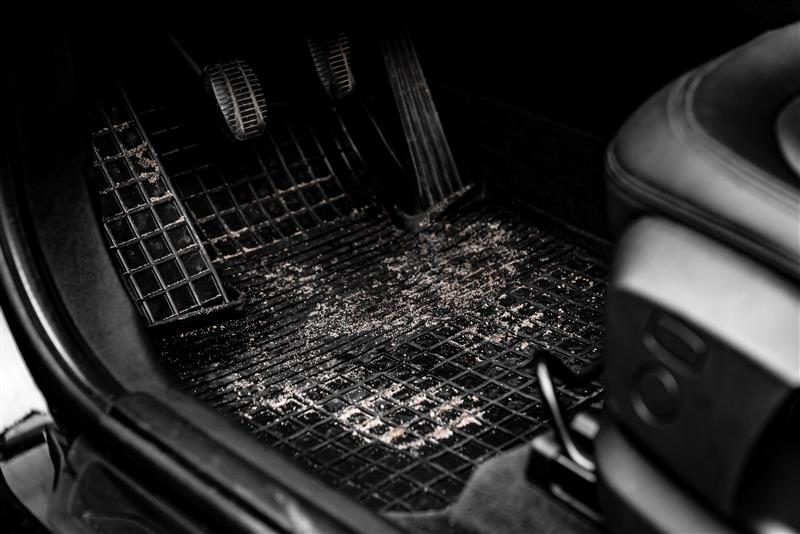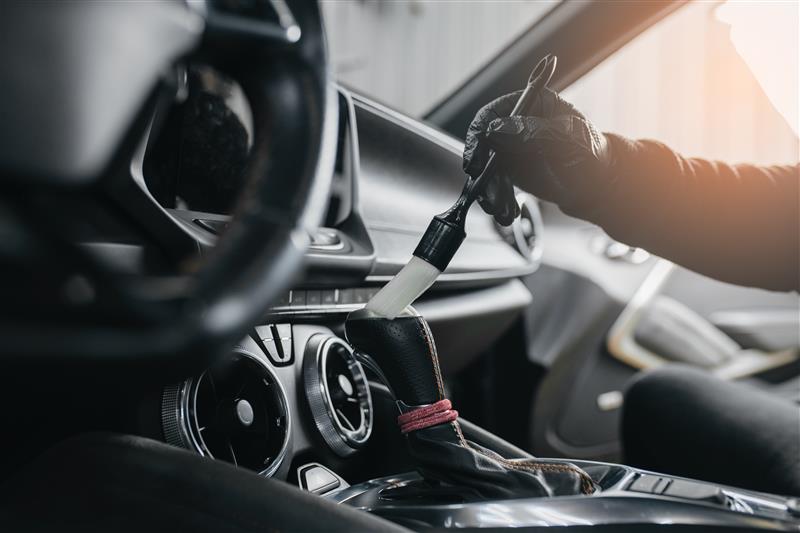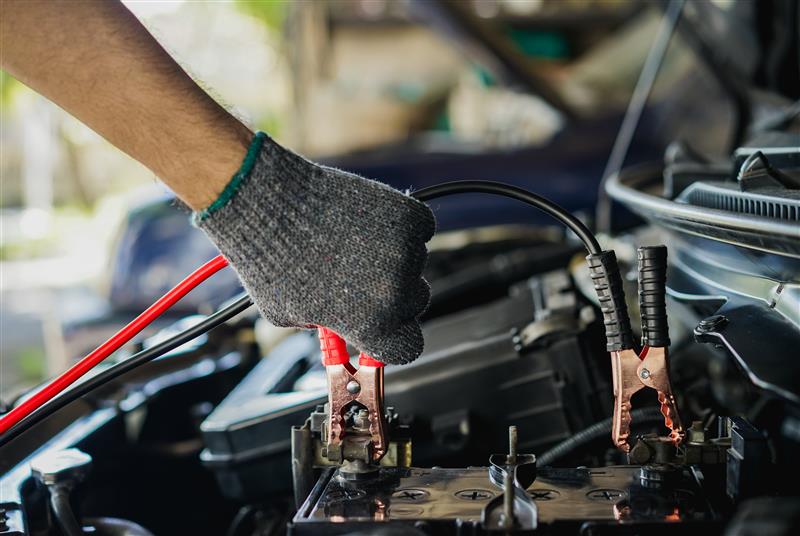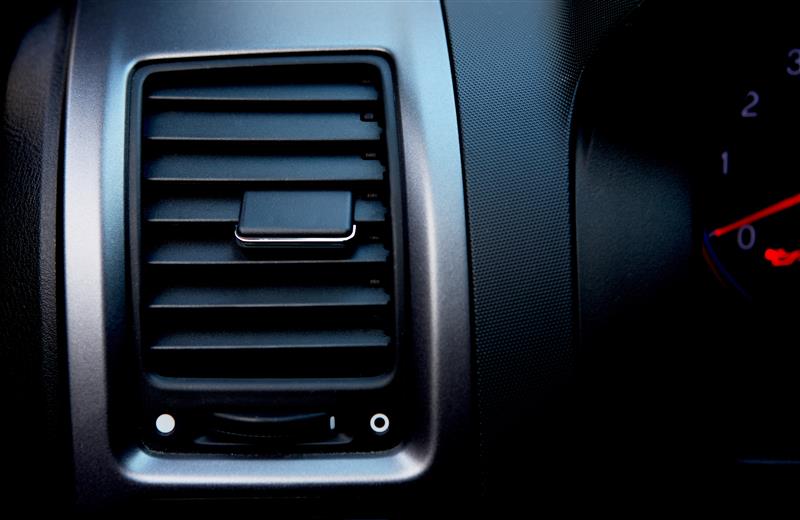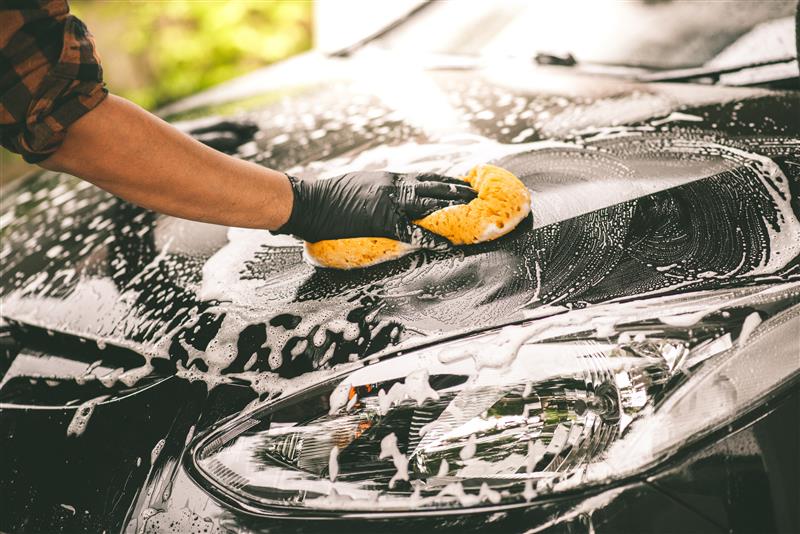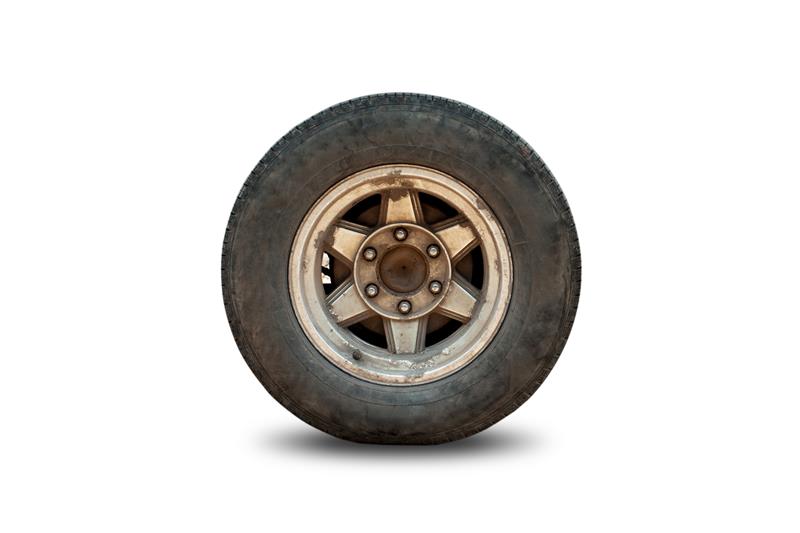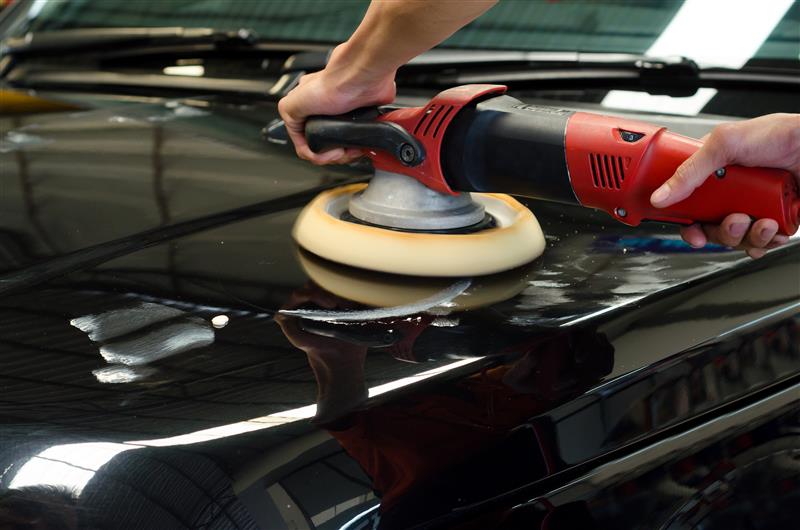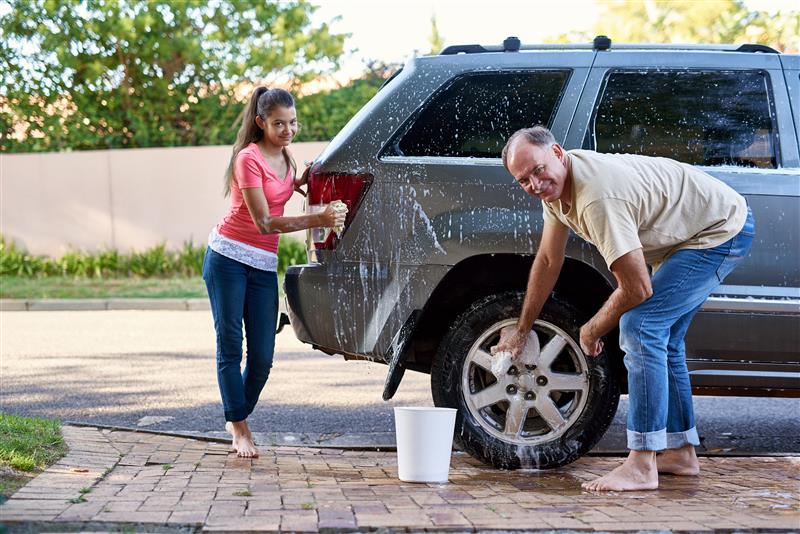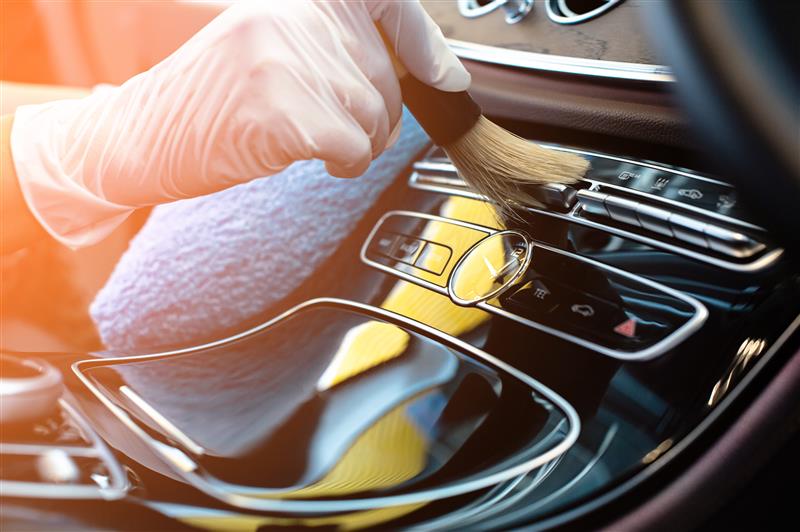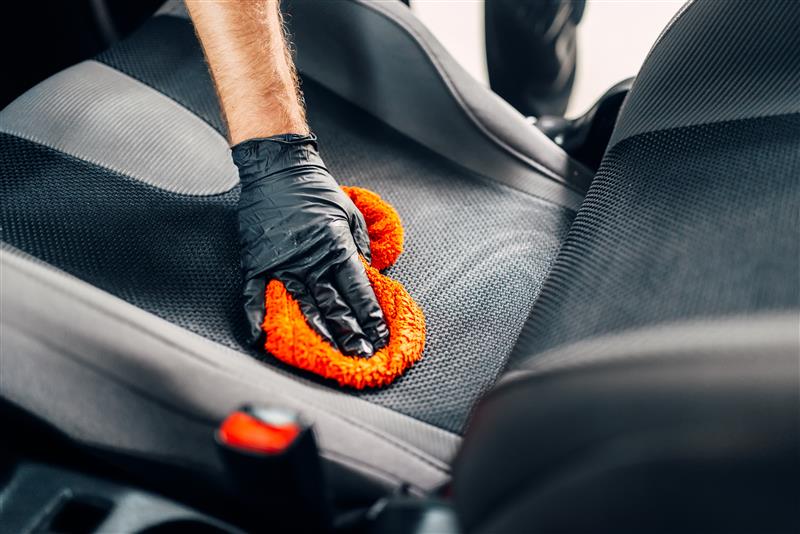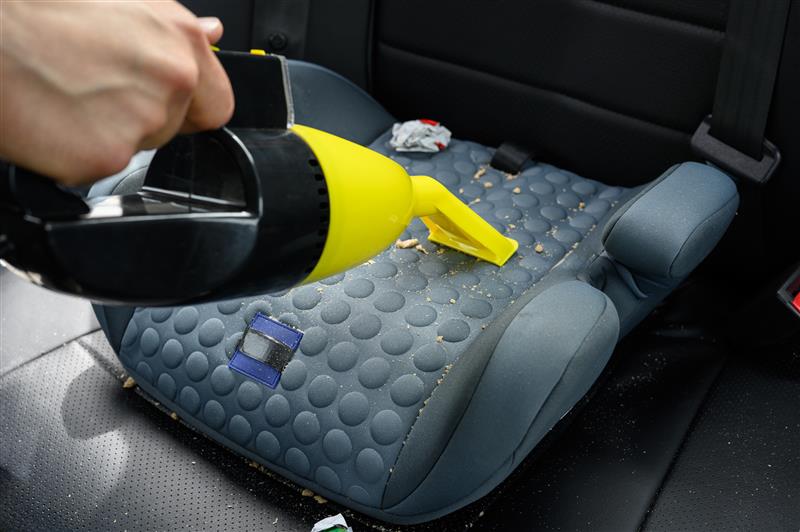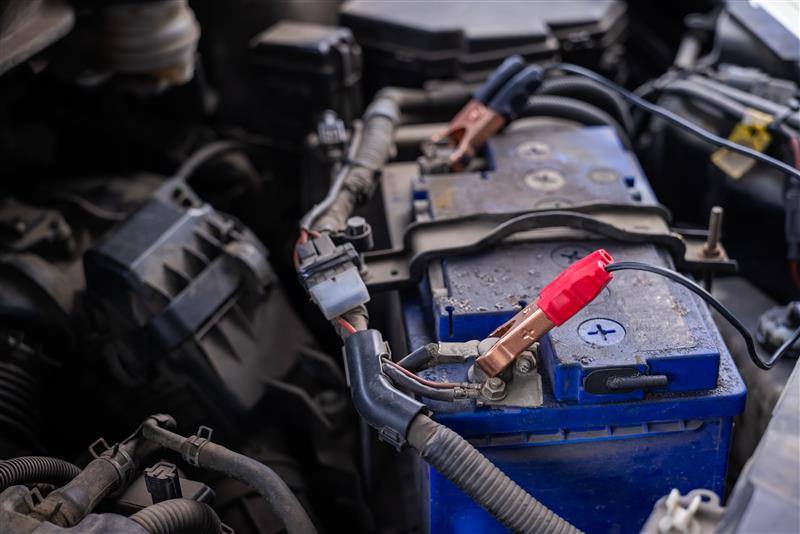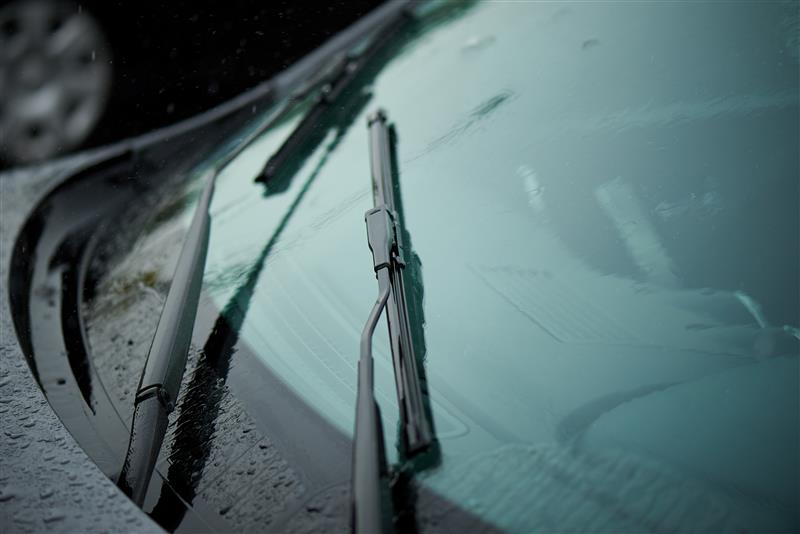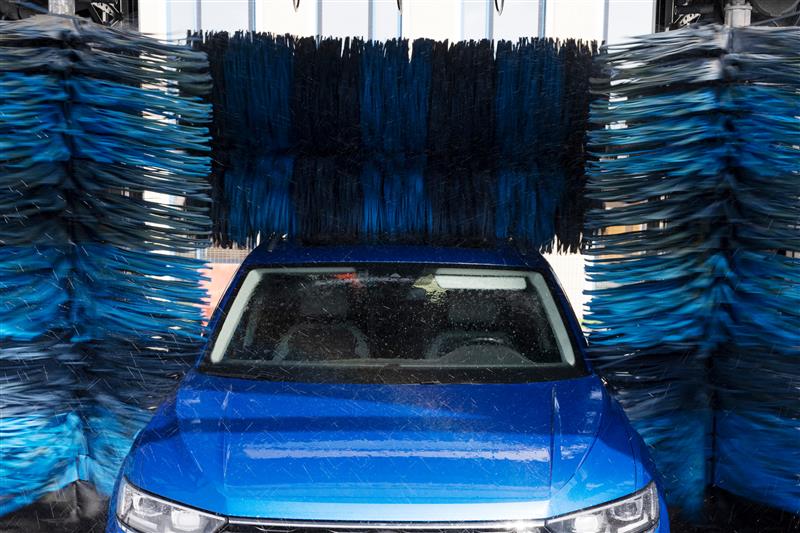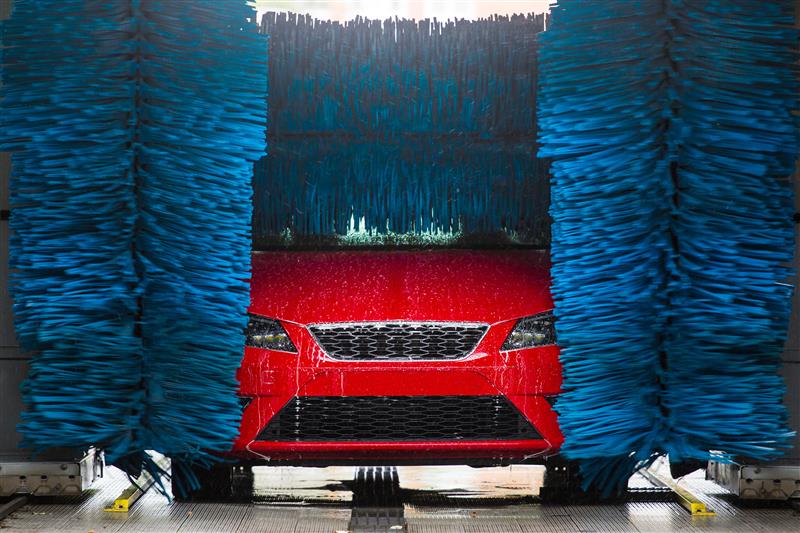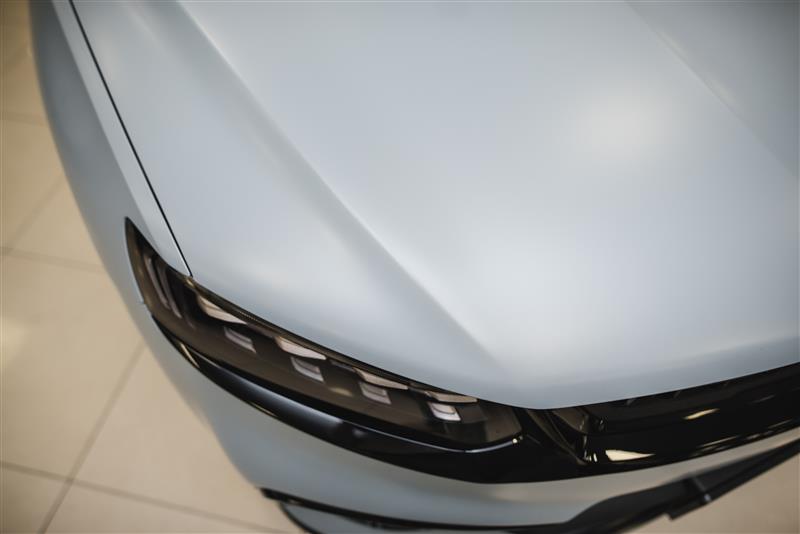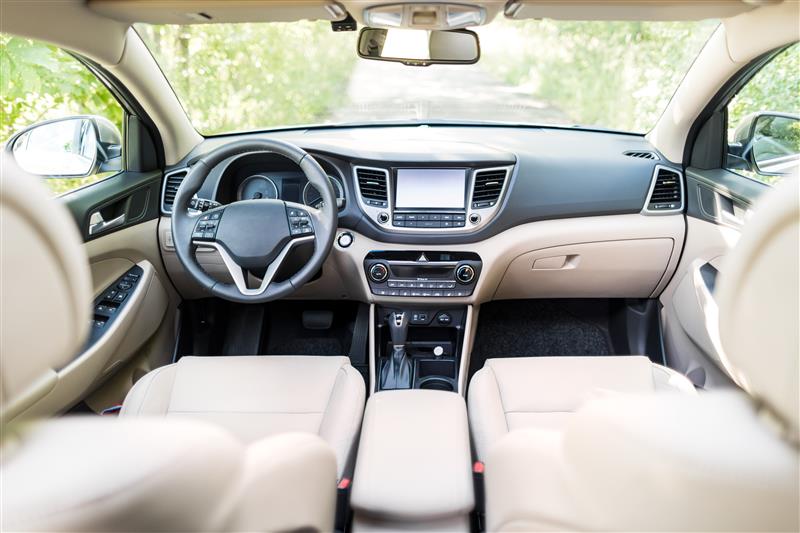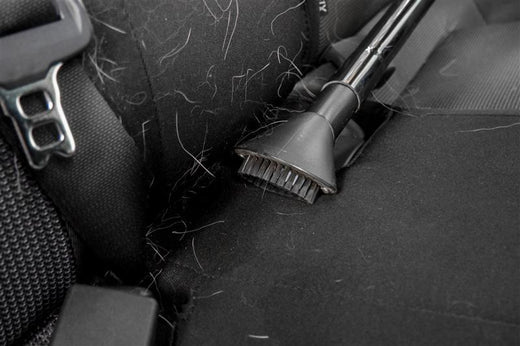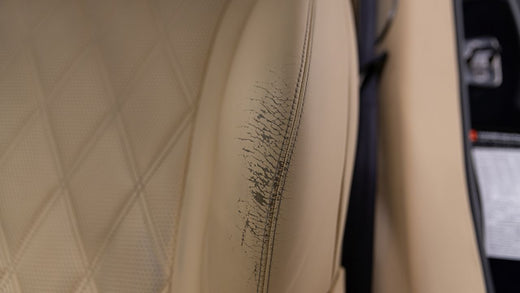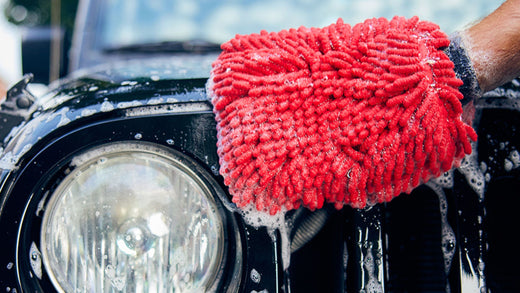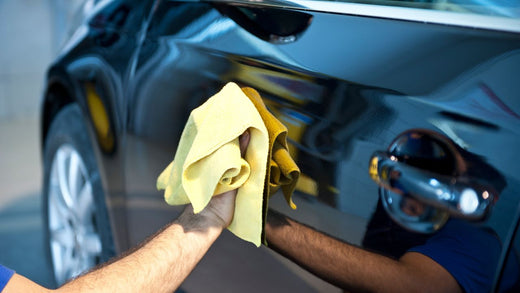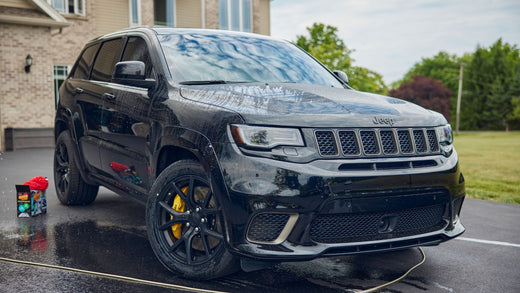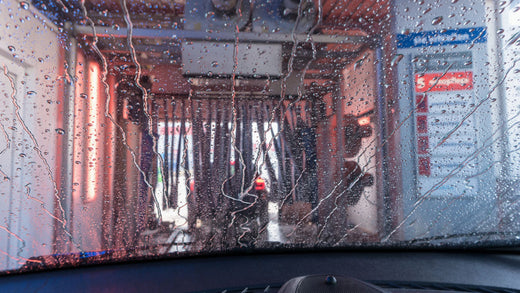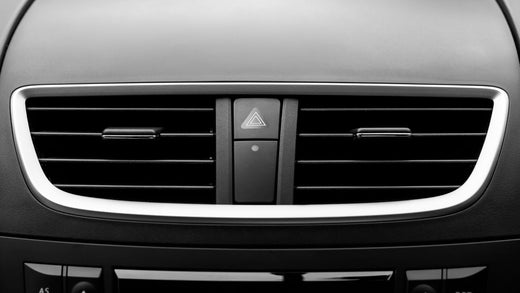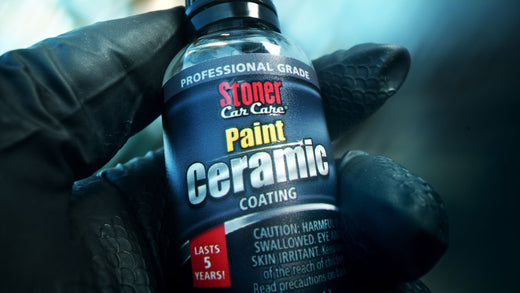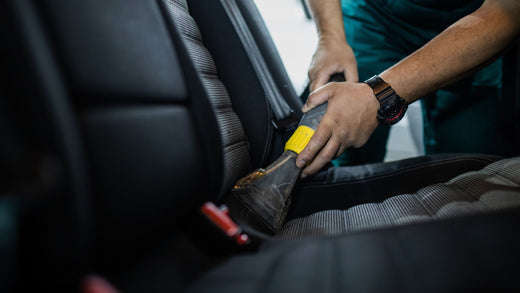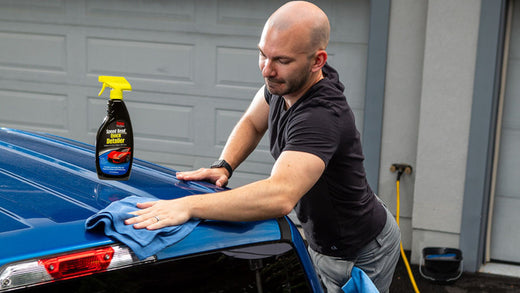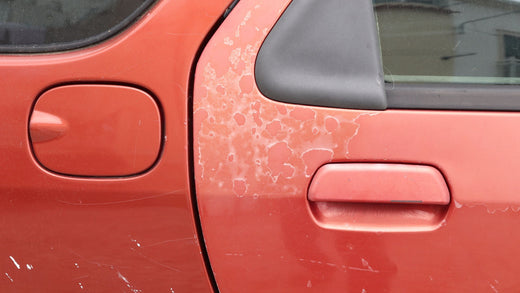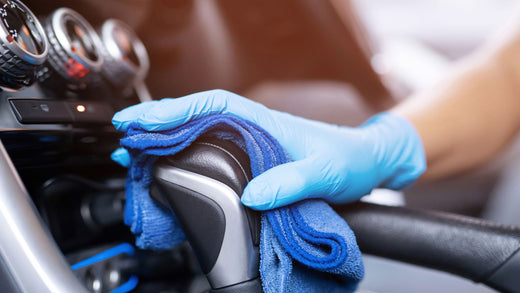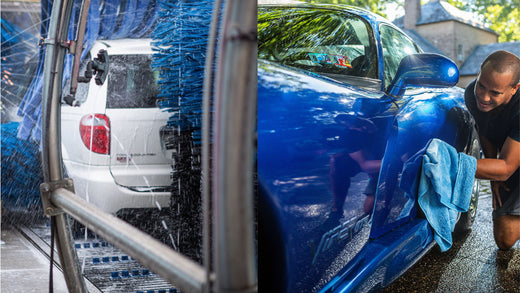Holiday shopping just got easier with free shipping on all orders. No code required.
Winter driving often means dealing with road salt, which can leave stubborn white stains on your carpets and mats. While road salt is essential for safer streets, it creates unsightly stains that weaken carpet fibers if not addressed. Keeping your car’s interior in top shape during snowy months requires proper care and cleaning.
This step-by-step guide shows you how to effectively remove salt stains and maintain your car’s carpets and mats. With the right tools and techniques, you can restore your interior to its original condition without leaving your garage.
To remove salt stains from car carpets and mats: Prepare the mats for cleaning, clean the mats using a trim cleaner, clean the carpets using an upholstery cleaner, and conduct post-cleaning maintenance.
Why Salt Stains Are a Problem
Road salt is essential for safer winter driving but can wreak havoc on your car’s interior. As snow mixed with salt melts and dries, it leaves a white, crusty residue on carpets and mats. This residue looks unpleasant and attracts moisture that accelerates wear and creates the perfect environment for mold growth.
Salt buildup weakens carpet fibers over time, reducing their durability and making stains more challenging to remove. Protecting your car’s interior means addressing these stains as soon as they appear, ensuring your carpets and mats stay in top condition through the winter and beyond.
<H2> Products You’ll Need
Before tackling salt stains, make sure you have these essential products and tools:
| Product/Tool | Purpose |
|---|---|
| Trim Cleaner | ❖ Effectively removes salt stains from rubber and all-weather mats without causing damage. |
| Upholstery and Carpet Cleaner |
❖ Designed for fabric surfaces ❖ Lifts embedded dirt and salt residue from carpets |
| Stiff-Bristle Brush | ❖ Agitates and lifts salt residue from carpet fibers for a deeper clean |
| Microfiber Cloth | ❖ Ideal for blotting and wiping treated areas to ensure a streak-free finish |
| Vacuum Cleaner with Attachments | ❖ Removes loose dirt and debris before and after treating stains for better results |
| Warm Water |
❖ Rinses rubber mats ❖ Moistens fabric surfaces to help removal |
Having these tools on hand will make the cleaning process smoother and more effective.
Step-by-Step Cleaning Process
Follow the steps below to remove salt stains successfully:
Preparation
Remove the mats from your vehicle to prevent dirt and salt from spreading to other areas during cleaning. Vacuum the mats and carpets inside your car, focusing on corners and crevices where salt accumulates. Use a vacuum with a crevice tool to reach tight spaces and clear away all particles for the best results.
Cleaning the Mats
Lay the mats flat on a clean surface to prepare for cleaning. Rubber and all-weather mats are built to withstand harsh conditions but often accumulate the heaviest salt stains during winter. Spray Stoner’s Trim Clean generously over the affected areas and let it sit for a few minutes to break down the residue.
Use a stiff-bristle brush to work the cleaner into the mats with circular motions, loosening embedded salt and grime. After scrubbing thoroughly, rinse the mats with warm water to wash away dirt and cleaner. For fabric mats, avoid soaking — blot the area with a damp microfiber cloth to remove cleaner and salt without oversaturating the material.
Allow the mats to dry completely before placing them back in your vehicle. For best results, air-dry them in a warm, well-ventilated space or use a fan to speed up the process.
Cleaning the Carpets
Salt stains embed deeply into your car’s carpets, making removal challenging. With the right tools and techniques, you can lift these stubborn stains and restore your carpet’s appearance. Follow these steps:
- Apply cleaner: Spray Stoner’s Upholstery and Carpet Cleaner directly onto the stained areas.
- Let it sit: Allow the cleaner to sit for 2–3 minutes to break down the salt deposits.
- Agitate the stain: Use a stiff-bristle brush to scrub in circular motions, lifting the residue from the carpet fibers.
- Blot the area: Use a clean microfiber cloth to absorb the cleaner and loosened salt.
- Repeat if necessary: For heavily stained spots, repeat the process until the stains are gone.
- Avoid oversaturation: Be careful not to oversaturate the carpet to prevent mildew or lingering odors.
- Dry thoroughly: Let the carpet air dry completely. For faster drying, leave the car doors open or use a portable fan for ventilation.
These steps will remove salt stains and maintain clean, fresh carpets. Regular care during winter keeps your car’s interior looking great and helps preserve the fibers for long-term durability.
Post-Cleaning Maintenance
Keeping salt stains at bay starts with a few protective measures. Apply a fabric protector to your carpets and a protective spray to rubber mats. These products create a barrier that helps repel dirt, salt, and moisture, making future cleanups easier and faster.
Simple habits can also make a big difference during snowy months. Use removable liners or old towels on the driver’s side floor to catch salt and water before they reach your carpets or mats. Regular vacuuming and spot-cleaning keep your interior fresh, so you’re always ready for the road ahead.
Keep Your Car Salt-Free and Fresh
Winter driving comes with challenges, but salt stains don’t have to be a lasting problem for your car’s interior. With Stoner’s Trim Cleaner and Upholstery and Carpet Cleaner, tackling stubborn salt residue becomes quick and efficient, leaving your carpets and mats looking their best.
By following the steps in this guide, you’ll restore your interior’s appearance and safeguard it against damage from salt and moisture. Regular maintenance paired with the right products keeps your vehicle fresh, clean, and ready for whatever the season throws your way.
Start early in the season and stay consistent with your cleaning routine. A little effort now goes a long way toward preserving your car’s interior and keeping it a comfortable, enjoyable space — no matter how harsh the winter weather is. Protect your vehicle and enjoy the drive!
Related posts
Learn what causes stubborn car odors & how to remove them for good with safe, probiotic cleaners that eliminate smells at the source — no masking, just results.
What Is Car Detailing? A Complete Guide
Car detailing goes beyond washing — deep cleaning and protecting your car inside and out to preserve value, enhance comfort, and restore like-new condition.
How to Safely Jump-Start Your Car in Minutes
Dead battery? Learn how to jump-start your car safely with step-by-step instructions, safety tips, and tools you’ll need to get back on the road fast.
How to Clean Car Vents Quickly and Effectively
Dirty car vents can cause odors, poor airflow, and trigger allergies. Learn how to clean your vents with simple tools to improve air quality, eliminate smells, and protect your HVAC system — all in just a few minutes.
How to Safely Wash a Black Car Without Scratching the Paint
Learn how to wash a black car safely and protect its glossy finish. Avoid swirl marks, water spots, and scratches with smart techniques and the right tools.
Is Tire Blooming Bad? What Causes Brown Tires and How to Clean Them
Brown tires? It’s likely tire blooming. Learn what causes it, if it’s harmful, and how to clean and prevent it for a deep black finish.
How Long Do Car Washes Take? A Quick Guide to Every Type of Wash
How long does a car wash take? Compare automatic, touchless, hand wash, and detailing times. Learn time-saving tips to wash your car faster and safer.
10 Essential Steps to Wash Your Car the Right Way
Wash your car like a pro—no swirls, no streaks. This 10-step guide shows you how to protect your paint, boost shine, and get that just-detailed look.
How to Remove Scratches from a Black Car
Learn how to fix scratches on black paint, from swirl marks to deeper damage. Step-by-step tips to restore shine and protect your car’s finish.
Is It Bad to Wash Your Car Too Often? The Truth About Frequent Car Washing
Think washing your car too often ruins the paint? Think again. Learn why frequent washes protect your vehicle—when done right with the proper tools.
How to Detail Your Car at Home: Step-by-Step Guide for a Pro-Level Clean
Bring your car back to life with this step-by-step detailing guide. Learn how to clean, polish, and protect your vehicle for pro-level results at home.
How to Get Rid of Bad Smells in Your Car: A Step-by-Step Guide
Learn how to remove bad smells from your car for good. Discover the top causes of car odors and step-by-step tips to eliminate and prevent them naturally.
How to Clean Fabric Car Seats: Easy Tips for Pro-Level Results
Clean fabric car seats like a pro with these simple steps! Learn how to remove stains, refresh upholstery, and extend your car’s interior life—easily at home.
Hot or Cold Water for Washing Your Car? What's Best for Your Paint
Hot, cold, or lukewarm? The right water temperature makes a difference when washing your car. Learn the pros and cons to keep your car clean without damage.
How to Clean a Child’s Car Seat: Simple Steps for Safe, Spotless Results
Keep your child’s car seat clean, fresh, and safe with these easy steps. Remove stains, sanitize surfaces, and maintain hygiene for every ride with confidence!
How to Clean Vomit Out of Your Car: Fast, Effective Steps to Eliminate Stains & Odors
Learn how to effectively remove vomit from your car using Lift Off Probiotic Stain & Odor Eliminator, a microbial cleaner that breaks down stains and eliminates odors.
How to Clean Car Battery Corrosion: Prevent Problems & Boost Performance
Prevent battery corrosion to keep your car running smoothly! Learn how to clean and protect your battery terminals in minutes for better performance and longevity.
Conventional vs. Beam Wipers: Which Type Is Right for Your Car?
Conventional vs. beam wipers: Which is right for you? Compare performance, durability, and cost to find the best option for clear visibility in any weather.
How to Change and Replace Windshield Wipers
Ensure clear visibility and safer driving by replacing your windshield wipers. This guide covers wiper types, step-by-step installation, and maintenance tips.
How to Remove Hard Water Spots from Car Windows
Hard water spots on car windows reduce visibility and damage glass. Remove them with specialized cleaners and prevent future buildup with proper maintenance.
Are Automatic Car Washes Safe for Your Car’s Paint?
Are automatic car washes safe for your car? Learn the risks, explore safer options like touch-free washes, and discover why hand washing is the best choice.
How to Maintain Matte and Satin Car Paint: Essential Tips for a Flawless Finish
Keep your matte or satin car paint flawless with proper care! Learn expert tips, must-have products, and maintenance steps to preserve its sleek, non-glossy finish.
What Products Are Safe to Use on Your Car's Interior?
Protect and enhance your car’s interior with safe, effective cleaning products. Achieve professional results on leather, glass, vinyl, and more!
Top 10 Must-Have Products for Basic Car Detailing
In this guide, we'll walk you through the essential products to get your car looking its best, from cleaners and polishes to tools and accessories. Let’s dive into the must-have items for basic car detailing.
Refresh Your Ride: The Ultimate Guide to Cleaning Car Seats
How do I Remove Pet Hair from a Car?
As a pet owner, you’ve probably struggled with pet hair clinging to every corner of your car. It’s not just unsightly — it can also trigger allergies and make your vehicle feel less fresh. Fortunately, removing pet hair doesn’t have to be a losing battle. This guide breaks down the most effective methods to restore your car’s interior to a clean, fur-free state.
How to Clean Leather Car Seats Without Damaging Them: A Step-by-Step Guide
Leather car seats bring comfort and style to any vehicle, but keeping them in top condition requires special care. You can easily clean your leather seats with the right approach and quality products while protecting them from wear, stains, and cracking. This guide will review the best techniques for maintaining leather seats and highlight Stoner Car Care products that deliver professional results. Follow these steps to keep your leather seats looking beautiful and well-preserved for the life of your car.
Scratch-Free Car Wash: Your Guide to a Flawless Finish
A clean car enhances its appearance, maintains value, and protects the paint. You can wash your vehicle confidently with the proper techniques and products, avoiding scratches and achieving a spotless shine. This guide will explain how to clean your car safely and effectively, ensuring a flawless finish every time.
How Long Does Car Detailing Take? A Breakdown of the Process
What is Paint Correction, and Do I Need It?
When it comes to keeping your vehicle’s exterior looking pristine, the term “paint correction” often comes up. But what exactly is paint correction, and why might you need it? In this post, we'll break down the paint correction process, show you how it works, and help you decide if it's the right step to maintain your vehicle's showroom shine.
Car Washing vs. Car Detailing: Understanding the Difference and Why It Matters
Keeping your vehicle in top condition requires more than just a simple wash. Many use the terms "washing" and "detailing" interchangeably, but these two processes differ. Both play crucial roles in maintaining your car’s appearance but involve varying levels of effort, products, and techniques. In this blog, we’ll break down the key differences between washing and detailing and show you how Stoner Car Care products can enhance both, helping you keep your car looking its best.
Drive-Through Car Washes: Safe or Risky for Your Car?
As a car owner, keeping your vehicle pristine is likely a top priority. Drive-through car washes offer a convenient option for maintaining your car's cleanliness, but many wonder if they are safe for their vehicle. In this blog, we'll explore this question in detail, examining the potential risks and benefits of using drive-through car washes and providing tips on minimizing any possible damage.
Fresh Air Ahead: How to Clean Your Car’s Air Vents for Better Air Quality
Keeping your car's air vents clean is critical to maintaining clean air inside your vehicle. Over time, dust, pollen, and other particles can build up, leading to unpleasant odors – and potentially affecting your health. With a few easy steps and the right products, you can ensure your air vents are spotless, and your drive is more enjoyable. Let’s dive into a simple and effective way to maintain your cabin’s air quality.
To Coat or Not to Coat: Is it Worth Getting a Ceramic Coating for My Car?
When it comes to maintaining the pristine condition of your car, paint protection is a top priority for many car owners. One popular method gaining traction in the automotive world is ceramic coating. But is it worth the investment? In this blog post, we’ll dive into the details of ceramic coatings, their benefits, and whether they are the right choice for your vehicle.
How to Start a Car Detailing Business: A Comprehensive Guide
Diving into the car detailing world can be an exciting and lucrative journey for car enthusiasts who love making vehicles shine. As the demand for professional car care grows, aspiring entrepreneurs have a ripe opportunity to make their mark. This guide will steer you through the critical stages of launching your car detailing business – from crafting a solid plan to putting that plan into action. Let's get your engines revving and gears shifting towards a successful business venture!
Gloss Like a Boss: Expert Techniques for Waxing Your Car
Waxing your car does more than just boost curb appeal – it's vital for preserving your vehicle's exterior. A well-waxed car doesn't just turn heads; it also stands a better chance against environmental threats like UV rays, rain, and road pollutants. Ideal for both auto enthusiasts and those aiming to keep their ride in tip-top shape, mastering the proper waxing techniques is key. Join us as we dive into the best practices for car waxing, sharing step-by-step guidance to ensure your vehicle sports a flawless, lasting gloss.
How Can I Protect My Car's Paint from Fading?
Your car's paint does more than just make it look good; it acts as a vital shield against environmental assaults. Yet, despite its importance, the vibrant finish can degrade over time due to the relentless sun, pollutants, and general wear and tear. This not only affects your vehicle’s aesthetic appeal but also its overall value. In this blog, we'll explore several proactive measures you can take to protect your car’s paint from fading, ensuring it stays as fresh and radiant as the day you drove it off the lot.
How to Remove Odors from Your Car Interior
Unleash a Cleaner Car: How to Get Rid of Pet Hair
Anyone who's ever had a pet knows the joys they bring: endless affection, companionship, and, unfortunately, a whole lot of pet hair. The fur will fly whether you take a quick trip to the park or an extended vacation drive, finding its way into every corner of your car, from the back seat to the carpets. Happily, you don’t need to leave Fido at home to have a clean ride. Clearing out pet hair can be quick and easy with the proper techniques and some top-notch car detailing products. This guide will walk you through the best ways to keep your vehicle looking spotless, no matter how furry your companion
Choosing the Best Wash: Automatic Car Washes vs. Hand Washing
Keeping your car looking spotless is essential, but deciding between an automatic car wash and hand washing can be tricky. Each method offers unique benefits and drawbacks, influenced by your schedule, car needs, and even your personal touch. In this guide, we’ll dive deep into the pros and cons of automatic car washes and hand washing, providing the insights you need to make the best choice for maintaining your vehicle’s sparkle and health. Whether you're pressed for time or need a detailed cleaning, understanding the options will help ensure your car always looks its best.

